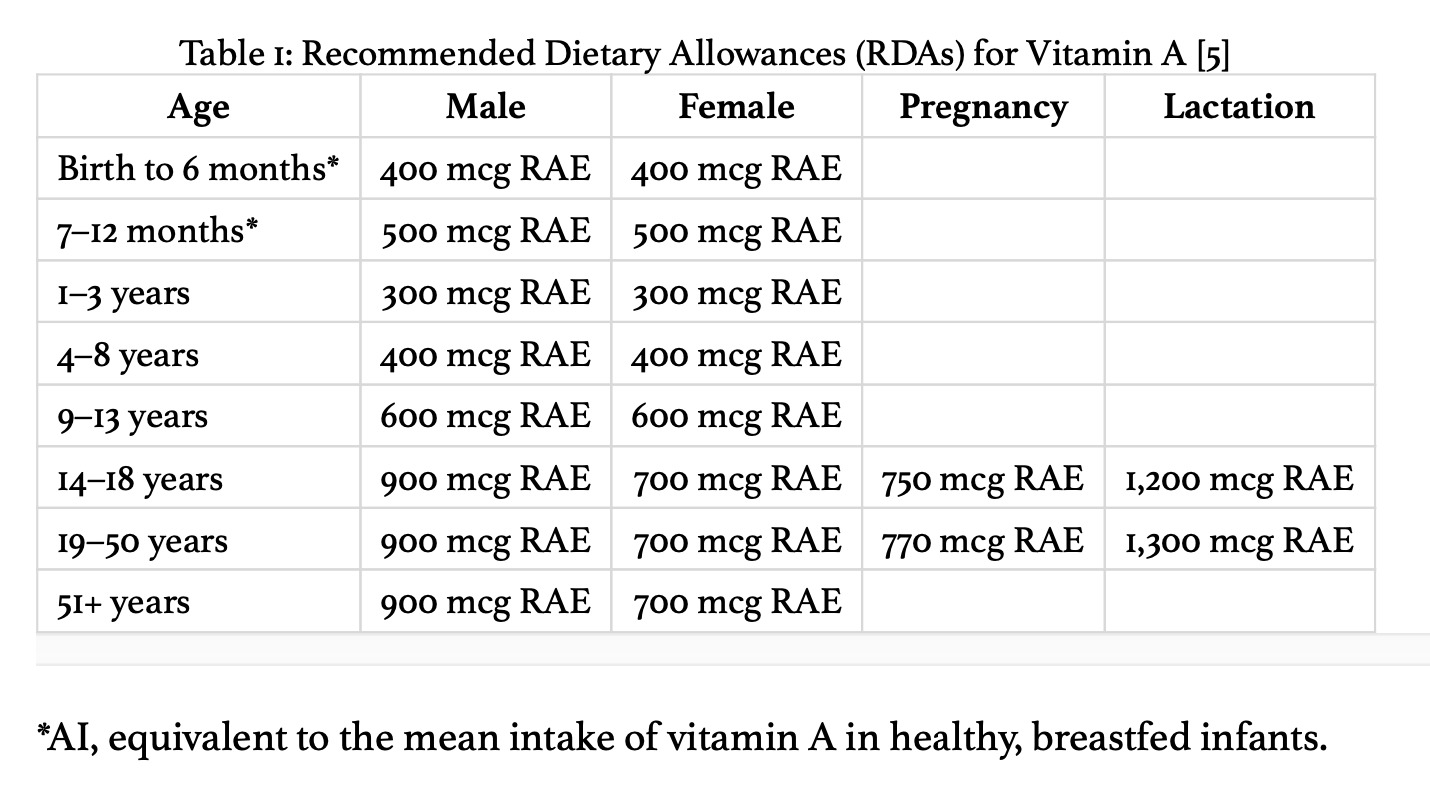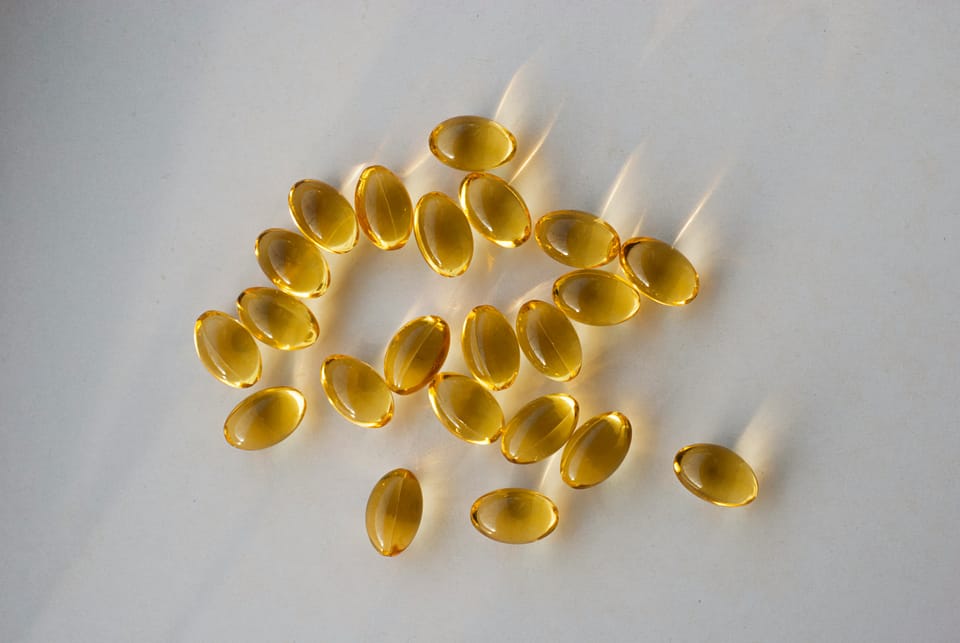How much vitamin A is needed to be healthy?

Below are the vitamin A recommended dietary allowances for all ages and stages of life. These are from the Office of Dietary Supplements from the National Institutes of Health. Many medical and natural health providers cite these pages, so they're a good neutral source of information.

How much vitamin A are you getting each day?
Adult multivitamins that include active retinol vitamin A often combine it with beta carotene (inactive) forms. Beta carotene forms don't pose a toxicity risk. But the way that supplements list their combined vitamin A totals can be confusing. Here's how easy it is to get the vitamin A you need every day without a supplement:
- 8 oz milk: approximately 149 mcg
- 1.5 cups cereal fortified with vitamin A: approximately 180 mcg (varies by brand)
- 4 oz cheese: approximately 110 mcg (varies by type)
- 3 oz salmon: approximately 60 mcg
- 1 tbsp butter: approximately 97 mcg
- 3 eggs: approximately 160 mcg
- 1 tbsp sour cream: approximately 17 mcg
- ½ cup full fat Greek yogurt: approximately 35 mcg
- Total: 808 mcg RAE
What if you take a multivitamin?
If you do take a multivitamin with a mix of carotenoid and retinol vitamin A, you may add another 250-300 mcg RAE of retinol to that. Supplemental retinol absorbs very well, between 75-100%, so that would put the daily intake up to approximately 1,100 mcg RAE. This is more than adequate to support a well-functioning immune system.
What influences your vitamin A levels?
Individual factors such as age, genetics, overall health status, and baseline vitamin A status significantly influence risk. This makes establishing universal safe levels challenging. Even when staying below the upper limit, some individuals might experience negative effects from vitamin A supplements.
What if you can't eat eggs, dairy, or fish?
If you do not eat eggs, dairy products, or fish, then you may not consume much active vitamin A per day. However, short of severe genetic defects, most bodies convert beta carotene to vitamin A to meet individual needs. So, if you eat vegetables and fruits, especially those that are red, orange, and yellow, you're likely getting enough vitamin A.
What if you also can't eat many vegetables or fruits?
If you do not eat eggs, dairy, or fish, and you struggle to consume fruits and vegetables, or you have digestive challenges that prevent you from eating red, orange, and yellow fruits/vegetables, then you may truly be low in vitamin A intake. However, the best way forward is to first consult with your medical provider, who would ideally refer you to a dietitian to plan a balanced dietary intake with what works for you and to provide expert advice about safe supplement intake, like dosage and form.
If a dietitian consult is not accessible, supplemental vitamin A in the carotenoid form, not the retinol form, can still support daily intake while greatly minimizing the risk of excess vitamin A intake or disruption to overall fat-soluble nutrient balance. Even so, you should still talk to your primary care provider, because medications and supplements — even the most basic nutrients — can still interact. "Natural" vitamin does not mean harmless nutrient.
